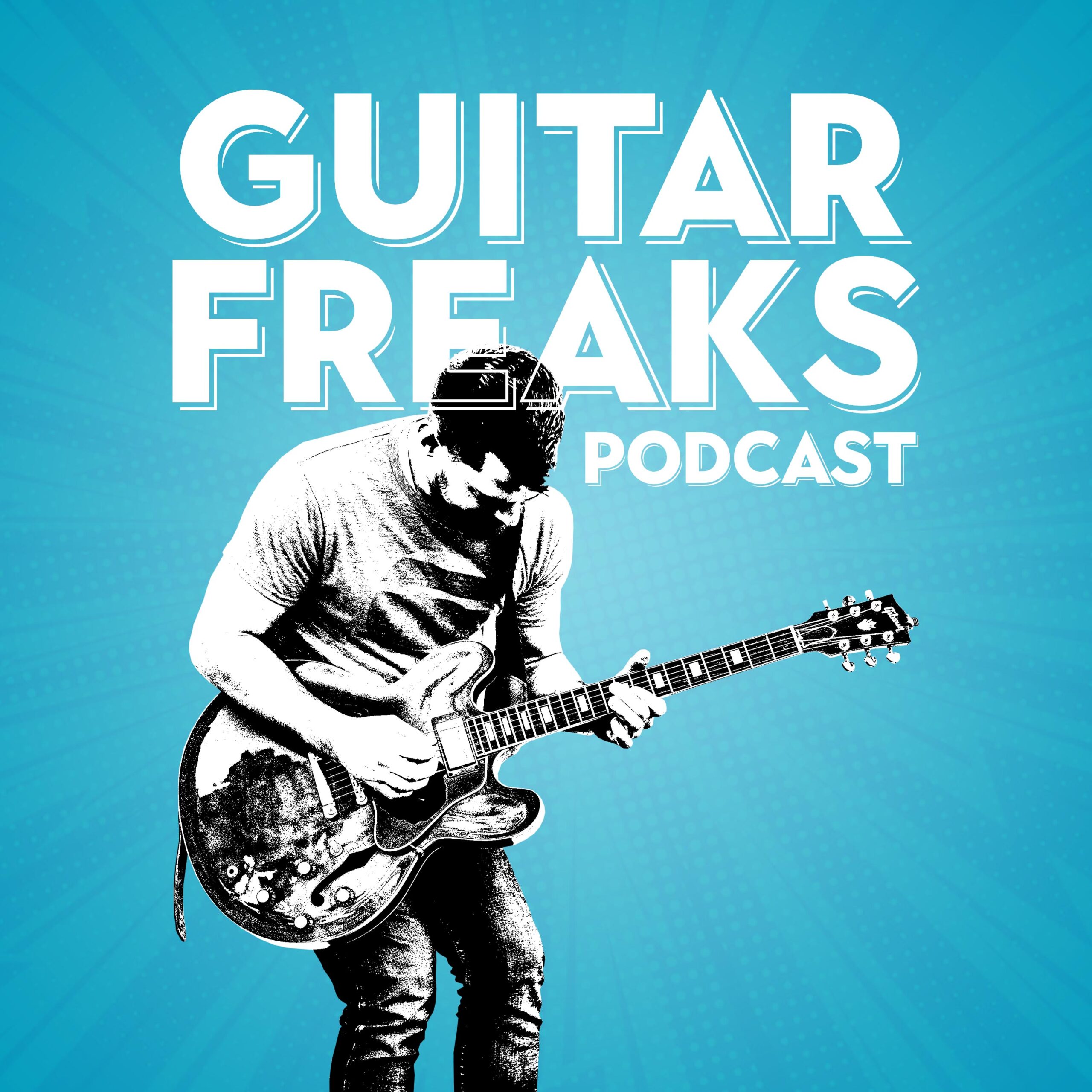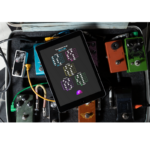Power Chords. There’s nothing quite like the sound of a guitar turned up loud, cutting through the air with raw power and energy. Whether it’s the punch of a power chord, the intricacy of a dynamic riff, or the driving groove of a rhythm guitarist locked in with the drummer, rock music is all about making a statement.
At the heart of this sonic force lies the power chord, a deceptively simple shape that has fueled countless rock anthems. When combined with solid rhythm techniques, creative riffs, and dynamic control, power chords become an unstoppable force, defining the sound of bands from AC/DC to Metallica.
In this guide, we’ll unlock the secrets of power chords, explore rhythm techniques, and show you how to create riffs and grooves that demand attention. Let’s crank up the amp and dive in!
What Are Power Chords?
The Simplicity and Strength of Power Chords
Power chords are the bread and butter of rock rhythm guitar. They consist of only two or three notes—the root, the fifth, and sometimes the octave of the root. Their stripped-down nature creates a clean, bold sound that’s perfect for distortion and high volumes.
Here’s an E5 power chord, one of the most commonly used:
e|---
B|---
G|---
D|-2-
A|-2-
E|-0-
Notice the absence of major or minor thirds, which keeps the sound neutral and versatile. This neutrality is what allows power chords to fit seamlessly into almost any context, from the heavy chugging of metal to the bright aggression of punk rock.

Download the ebook “SoloCraft”!
SoloCraft is the ultimate guide to mastering guitar soloing, designed for players of all levels. Packed with step-by-step lessons, pro-level techniques, and real-world examples, SoloCraft teaches you how to navigate the fretboard, craft expressive solos, and unlock your full potential as a lead guitarist. Whether you’re improvising, building speed, or adding emotion to your playing, SoloCraft gives you the tools to solo like a pro.
Download Now
Why Power Chords Are Essential for Rock
Imagine the opening riff of “Smells Like Teen Spirit” by Nirvana or the driving energy of “Smoke on the Water” by Deep Purple. Both rely on the simplicity and clarity of power chords. Here’s why they’re a must for every guitarist:
- They’re Easy to Learn: The simple two-note structure makes them perfect for beginners.
- They’re Easy to Move: Power chords are movable shapes, so once you know one, you know them all.
- They Sound Amazing with Distortion: Their clean structure cuts through the mix, even at high gain levels.
Writing Riffs That Leave a Mark
Great rock riffs don’t just happen—they’re crafted with intention and built on a foundation of rhythm and groove. Here’s how to start writing riffs that stick in listeners’ minds:
Step 1: Lock into a Groove
Every memorable riff begins with a groove. Whether you’re tapping your foot or nodding along to a beat, feeling the rhythm is key. Start by playing along with a metronome or drum track, then experiment with power chord progressions like:
E5 – G5 – A5 – D5
Focus on the timing, letting the rhythm guide your strumming patterns.
Step 2: Add Flair with Slides and Muting
One way to elevate a simple progression is by adding slides or palm muting:
- Slide into the first chord to create anticipation.
- Palm mute the low strings for a percussive “chugging” effect.
Techniques to Rock Your Rhythm
1. Palm Muting: The Secret Weapon to Power Chords
Palm muting gives rock rhythm guitar its signature punch. Rest the side of your picking hand lightly on the strings near the bridge while striking the strings.
- Pro Tip: Experiment with the amount of pressure you apply. More pressure creates a tighter sound, while less allows the notes to ring out slightly.
- In Action: Think of the chugging rhythm in Metallica’s “Enter Sandman”—it’s all about precise palm muting.
2. Dynamic Strumming
Strumming dynamics bring your playing to life. Alternate between soft and loud strums to create tension and release. For example:
- Strum softly during a verse for a laid-back feel.
- Explode into full strumming for the chorus to bring the energy.
3. Sliding Power Chords
Sliding into a power chord can add drama and energy. Start with a muted strum, then slide into the chord shape on beat one for maximum impact.

Download the ebook “SoloCraft”!
SoloCraft is the ultimate guide to mastering guitar soloing, designed for players of all levels. Packed with step-by-step lessons, pro-level techniques, and real-world examples, SoloCraft teaches you how to navigate the fretboard, craft expressive solos, and unlock your full potential as a lead guitarist. Whether you’re improvising, building speed, or adding emotion to your playing, SoloCraft gives you the tools to solo like a pro.
Download Now
Build a Killer Rock Riff
Let’s put these techniques together and create a riff:
e|-------------------------
B|-------------------------
G|-------------------------
D|-2-2---2--4--2-----------
A|-2-2---2--4--2-----------
E|-0-0---0--2--0-----------
How to Play It:
- Start with a muted downstroke on the low E string.
- Alternate between palm-muted and open strumming.
- Use slides between the 2nd and 4th frets for added movement.
Dynamics: The Art of Controlling Energy With Power Chords
Why Dynamics Matter
Imagine a song that’s played at the same intensity from start to finish—it would get boring quickly. Dynamics add shape to your music, making it engaging and unpredictable.
Try This Dynamic Build:
- Begin with soft, palm-muted power chords.
- Gradually increase picking intensity, letting the notes ring out more with each strum.
- End with aggressive, full-strummed chords for a powerful climax.
Rock Guitar Legends to Inspire You
Studying the masters of rhythm guitar can teach you how to elevate your playing. Here are three legends to add to your playlist:
- Malcolm Young (AC/DC)
The master of simplicity, Malcolm’s tight, driving rhythms are a lesson in the power of restraint. Listen to “Back in Black” to hear how his riffs anchor the band’s sound. - James Hetfield (Metallica)
Hetfield’s aggressive downpicking and precision palm muting are unmatched. Check out “Master of Puppets” for a masterclass in rhythm guitar. - Tony Iommi (Black Sabbath)
Iommi’s dark, riff-heavy style defined heavy metal. His use of power chords and tritone intervals in “Iron Man” is iconic.
Practice Exercises for Rock Rhythm Guitar Power Chords
Exercise 1: Power Chord Progressions
Work on this progression to improve transitions:
E5 – A5 – G5 – D5
Focus on clean changes and consistent timing.
Exercise 2: Combine Power Chords and Scales
Use the A minor pentatonic scale to add single-note licks between power chords:
e|----------------5-8--
B|------------5-8------
G|--------5-7----------
D|----5-7--------------
A|5-7------------------
E|---------------------
Exercise 3: Dynamic Strumming
Practice switching between soft and loud strums on a single chord. For example:
Down (soft) – Down (hard) – Down (soft) – Up (hard)
Internal and External Links
- Internal Link: Check out Mastering Pentatonic Scales on Guitar to expand your riff creation skills.
- External Link: For additional tips, read Guitar World’s article: 21 Ways to Improve Your Rhythm Guitar Playing.
Join the Guitar Freaks Hangout
Ready to take your playing further? Connect with fellow guitarists, share your progress, and jam together in the Guitar Freaks Hangout on Discord!
👉 Join the Guitar Freaks Hangout on Discord
By mastering power chords and rhythm guitar techniques, you’re not just learning to play—you’re learning to rock. So crank up your amp, experiment with these ideas, and let your guitar roar like never before! 🎸

Download the ebook “SoloCraft”!
SoloCraft is the ultimate guide to mastering guitar soloing, designed for players of all levels. Packed with step-by-step lessons, pro-level techniques, and real-world examples, SoloCraft teaches you how to navigate the fretboard, craft expressive solos, and unlock your full potential as a lead guitarist. Whether you’re improvising, building speed, or adding emotion to your playing, SoloCraft gives you the tools to solo like a pro.
Download Now










